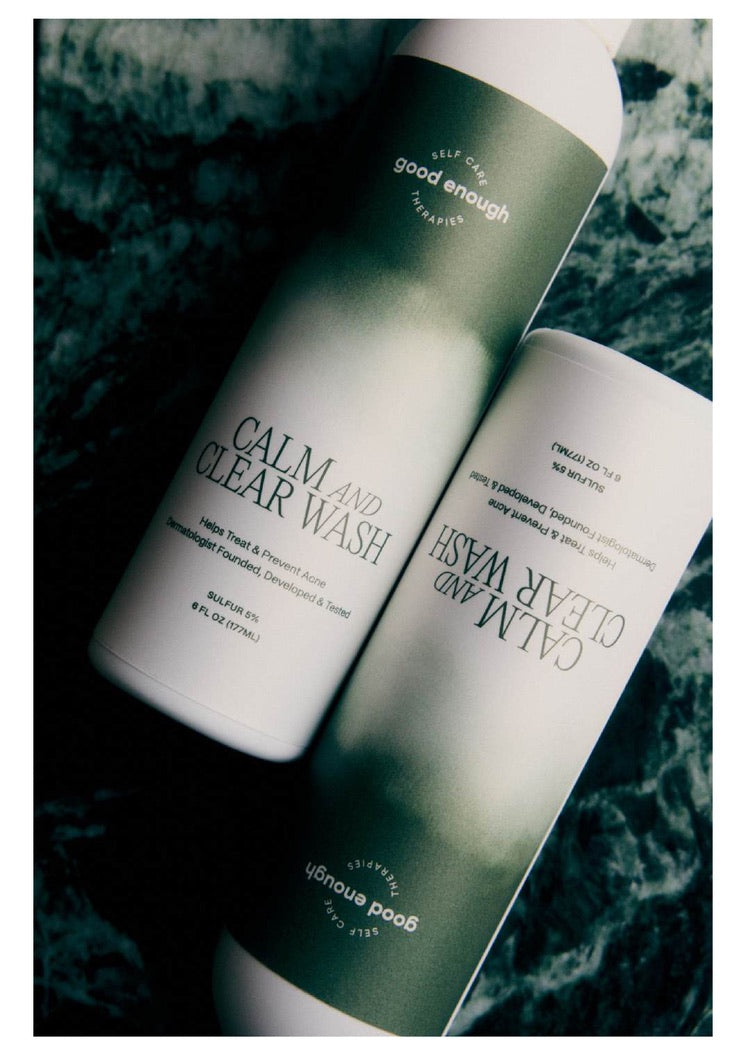The Science Behind Sulfur: A Natural Solution for Clearer Skin
Share

Sulfur has been a cornerstone in dermatology for centuries, renowned for its multifaceted benefits in treating various skin conditions. Modern research continues to validate its efficacy, making it a valuable ingredient in skincare formulations aimed at combating acne, rosacea, perioral dermatitis, and fungal acne.
How Does Sulfur Work?
When applied topically, sulfur undergoes chemical reactions that contribute to its therapeutic effects:
-
Keratolytic Activity: Sulfur interacts with cysteine in the skin to produce hydrogen sulfide, which helps break down keratin, promoting the shedding of dead skin cells and preventing pore blockage.
-
Antimicrobial Properties: The formation of pentathionic acid from sulfur application exhibits toxicity against fungi and certain bacteria, including Propionibacterium acnes and Staphylococcus aureus, which are implicated in acne development.
-
Anti-Inflammatory Effects: Sulfur's ability to reduce inflammation aids in alleviating redness and irritation associated with rosacea and perioral dermatitis.
Clinical Evidence Supporting Sulfur's Anti-Inflammatory Efficacy
A randomized controlled trial compared a sulfur cream to a commonly prescribed steroid cream. The study found both sulfur and steroid cream treatments to be equally effective, with sulfur showing sustained benefits even after the treatment period.
Sulfur in Treating Specific Skin Conditions
-
Acne Vulgaris: Sulfur's antimicrobial action targets P. acnes, reducing inflammation and preventing new breakouts.
-
Rosacea: By mitigating inflammation and controlling microbial growth, sulfur helps in managing rosacea symptoms.
-
Perioral Dermatitis: Sulfur's gentle exfoliating and anti-inflammatory properties make it suitable for treating this sensitive condition.
-
Fungal Acne: The antifungal effects of sulfur, particularly against Malassezia species, aid in clearing fungal acne.
Cellular Changes Induced by Sulfur
Topical sulfur application has been observed to cause histological (seen under the microscope) changes such as a reduction in hyperkeratosis and acanthosis, which may contribute to its therapeutic effects in skin disorders. Hyperkeratosis and acanthosis is thickening of the top layer of skin. Sulfur reduces the thickness of the top layer of skin preventing it from clogging pores and dulling skin.
Conclusion
Sulfur's multifaceted actions—keratolytic, antimicrobial, and anti-inflammatory—make it a potent ingredient in skincare, particularly for those struggling with acne, rosacea, perioral dermatitis, and fungal acne. Its efficacy, backed by clinical research, underscores its value in dermatological treatments.
References:
-
Asilian A, Mohammadian P, Hosseini SM, et al. Comparison of the effect of topical triamcinolone 0.1% cream with sulfur 2.0% cream in the treatment of patients with hand eczema: A randomized controlled trial. J Cosmet Dermatol. 2024;23(1):45-50.
-
The use of sulfur in dermatology. ESPA Library.
-
Sulfur revisited. J Am Acad Dermatol. 1988;18(3):553-558.
-
Sulphur for rosacea: Are we reinventing the wheel? J Am Acad Dermatol. 2011;65(1):e1-e2.
-
Acne and sulfur: What are the effects? Typology.